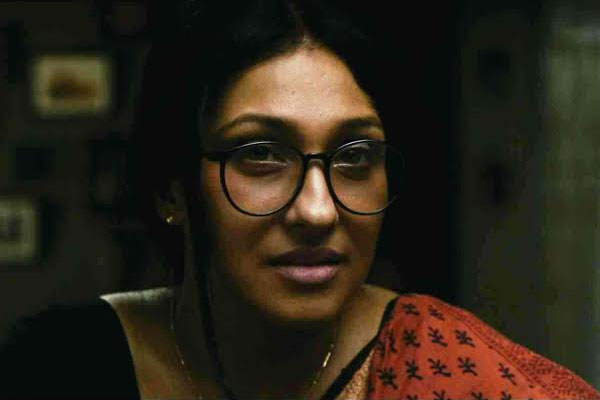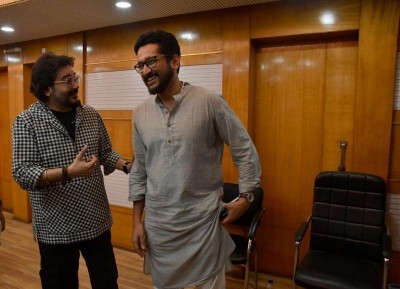
Language of change
Filmmaker Bauddhayan Mukherji is not new to accolades. He drew attention when his Bell Bajao campaign of one-minute series of films on domestic violence won the prestigious Silver Lion in the Film Category at the Cannes Lions International Advertising Festival, 2010. It also won many awards including the Community Engagement Award at the Media That Matters festival in New York, and the Best Public Service Advertisement award at the UNFPA-Laadli Media Awards, India, 2009..jpg)
Now his first feature film Teenkahon has won the award for the Best Screenplay, Bridge Film Festival, Mitrovice, Kosovo 2014 and Special Mention of the Jury at the same festival for cinematography. “It is an art house film which, as a piece of social document on South Asian life, tries to capture the changing face of morality, the degeneration of values, the increasing pollution of the spoken language and the changing social fabric of India through three stories,” says Mukherji whose wife Monalisa has produced the film.
Though Teenkahon is a Bengali film, but the theme of obsession is universal. Joy Sengupta and Ashish Vidyarthi play important roles in two of the three films..jpg)
“The seed for the film was sown in the summer of 2011 in the sleepy town of Kandy in Sri Lanka. I was engrossed in a collection of short stories from Desh magazine. One story that blew my mind was Swami O Premik (Husband and the Lover) by Syed Mustafa Siraj, the well-known contemporary Bengali writer. I knew I had to film it. Teenkahon was born out of that desire. Gradually it fanned out to include two more stories I fell in love with and the result was this triptych,” reminisces Mukherji.
The other interesting journey was through the ever-changing Bengali language in the lives of Bengalis. The syntax of the Bengali language, the diminishing usage of the Sanskritised form of Bengali, the prevalent colloquialism, the growing pollution in words used and the influence of the Queen’s English. “ Each screenplay was a discovery through the language of the times,” the director says.
Spread over a hundred years, the three stories are structured in the manner of the classical Three Act Play in which each act or story explores a single facet of an obsessive adulterous relationship. What are the three stories all about? The first film, Nabalok shot in B & W in keeping with the time setting (1920 – 1954) is about the emotional attachment of an eight-year-old boy that evolves into an obsession for a newly married girl. It is based on a story by Bibhutibhushan Mukhopadhyay (not Bandopadhyay of Pather Panchali fame ). The plot unfolds in Kolkata and then moves on to rural Bengal..jpg)
The second film Post Mortem is based on a story by Syed Mustafa Siraj. It is set against the backdrop of the devastating floods of 1978, depicted for the first time on screen. It is shot in Technicolour and is structured like a drawing room drama where the husband and the lover of a woman who committed suicide the previous night share their distinct perspectives about this woman and about her tragic death.
The third, called Telephone is placed in 2013 and is based on Mukherji’s own story shot digitally keeping with current practices with Rituparna Sengupta in the lead role. Told through a story about the changing relationship of a police officer and his wife, it captures the superficial features of contemporary life and relationships. But it also focuses on how the woman emerges confidently in the society drawing from her dormant strength.
“Teenkahon is my personal tribute to hundred years of filmmaking in India.. Each film stays true to the filmmaking style of that period. I have tried to use the methods, techniques and tools that existed and were practiced in the era to which the respective story belongs,” says Mukherji. Thus each story is a vignette of the period it is set in and looks at the populist trends of the time painstakingly restored in terms of props, costumes, make up etc.
To give it the authentic touch, Mukherji has digitally manipulated the cinematographic impact to imitate color processes available in India during the periods in which each film is set. “The language of cinema keeps changing over the three films - rules are formed over the first two and broken in the third,” Mukherji sums up.
Teen Kahon is part of Official Selections at Mumbai Film Festival, the Zimbabwe International Film Festival in Harare and in the South Asian Film Festival, Seattle, as well as in the North Carolina International South Asian Film Festival.
Support Our Journalism
We cannot do without you.. your contribution supports unbiased journalism
IBNS is not driven by any ism- not wokeism, not racism, not skewed secularism, not hyper right-wing or left liberal ideals, nor by any hardline religious beliefs or hyper nationalism. We want to serve you good old objective news, as they are. We do not judge or preach. We let people decide for themselves. We only try to present factual and well-sourced news.





